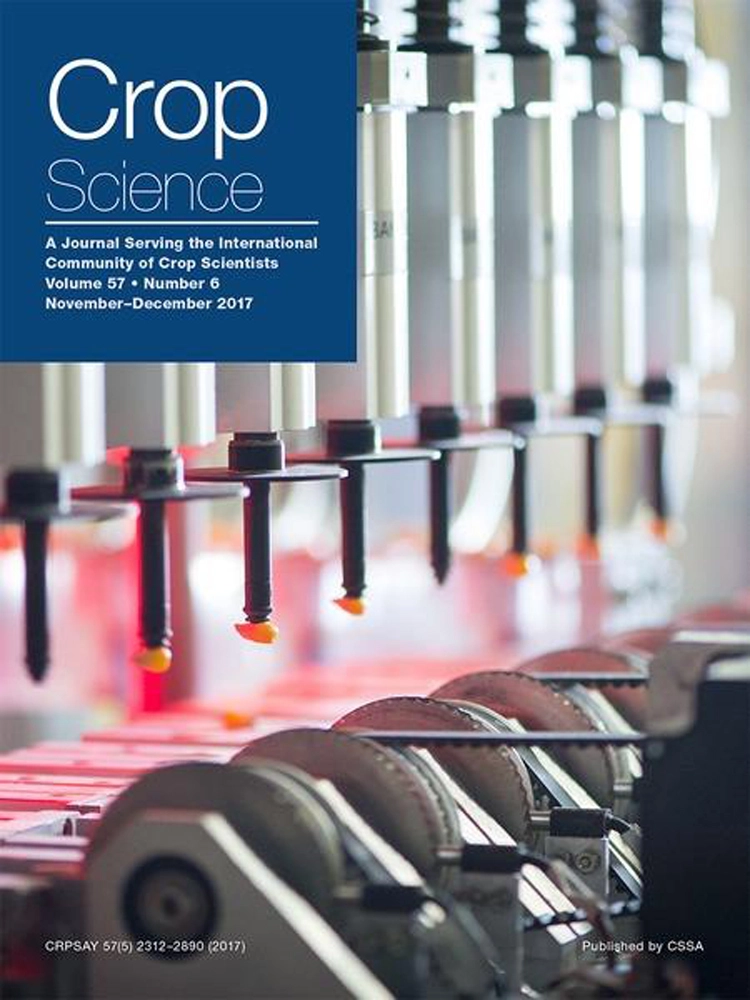Ver ítem
- xmlui.general.dspace_homeCentros e Institutos de InvestigaciónCIAP. Centro de Investigaciones AgropecuariasInstituto de Fisiología y Recursos Genéticos VegetalesArtículos científicosxmlui.ArtifactBrowser.ItemViewer.trail
- Inicio
- Centros e Institutos de Investigación
- CIAP. Centro de Investigaciones Agropecuarias
- Instituto de Fisiología y Recursos Genéticos Vegetales
- Artículos científicos
- Ver ítem
Water Deficit Modulates the Relationship between Temperature and Unsaturated Fatty Acid Profile in Soybean Seed Oil
Resumen
Soybean [Glycine max (L.) Merr.], a major source of vegetable oil worldwide, contains unsaturated fatty acids (UFA) beneficial for human health, leading to the use of soybean oil in nutraceuticals. The objective of this study was to quantify the effect of water deficit on relationships of soybean seed UFA with temperature and with solar radiation. The UFA profile was determined in harvested seeds of commercial cultivars grown in 76 environments in
[ver mas...]
Soybean [Glycine max (L.) Merr.], a major source of vegetable oil worldwide, contains unsaturated fatty acids (UFA) beneficial for human health, leading to the use of soybean oil in nutraceuticals. The objective of this study was to quantify the effect of water deficit on relationships of soybean seed UFA with temperature and with solar radiation. The UFA profile was determined in harvested seeds of commercial cultivars grown in 76 environments in Argentina (29–38° S latitude). To our knowledge, this is the first study demonstrating a differential response of oleic (Ol), linoleic (Li), and linolenic (Ln) acids and Ol/(Li + Ln) ratio to temperature during seed fill (TmR5R7) under different conditions of field water availability. This study is also the first showing that in environments without water restrictions, Ol, Li, and Ol/(Li + Ln) ratio exhibit a quadratic response to TmR5R7. In drought environments, rising TmR5R7 and water deficit caused linear increases in Ol and [Ol/(Li + Ln)] ratio and linear decreases in Li and Ln, with both climatic factors exhibiting additive effects on UFA. Cumulative solar radiation predicted UFA in both environments but was less robust than TmR5R7 and precipitation minus potential evapotranspiration during the reproductive period (pp − PETR1R7). Our results demonstrate that water deficit (estimated as pp − PETR1R7) modulates the relationship between TmR5R7 and soybean seed UFA under rainfed conditions.
[Cerrar]

Fuente
Crop Science 57 (6) : 3179-3189 (November–December 2017)
Fecha
2017-08-23
Editorial
Crop Science Society of America
ISSN
0011-183X
1435-0653 (online)
1435-0653 (online)
Formato
pdf
Tipo de documento
artículo
Palabras Claves
Derechos de acceso
Restringido
 Excepto donde se diga explicitamente, este item se publica bajo la siguiente descripción: Creative Commons Attribution-NonCommercial-ShareAlike 2.5 Unported (CC BY-NC-SA 2.5)
Excepto donde se diga explicitamente, este item se publica bajo la siguiente descripción: Creative Commons Attribution-NonCommercial-ShareAlike 2.5 Unported (CC BY-NC-SA 2.5)

